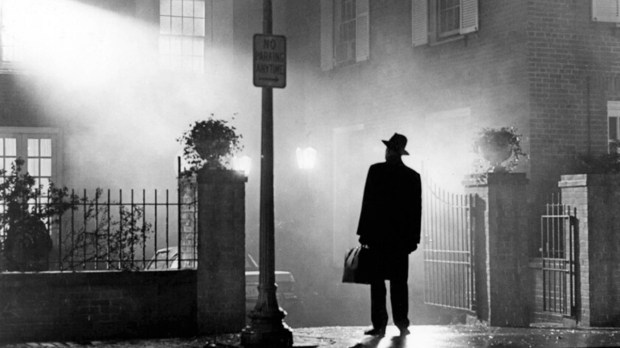“It still happens, every time we show it,” said the Coolidge Corner Theatre’s Mark Anastasio in a recent interview with Boston Hassle. What he was referring to is the tendency for one or more audience members to flee the auditorium during any given screening of The Exorcist. Especially Catholics. According to Mr. Anastasio, “They account for most of the audience members that run for the doors.” Why is that so? Perhaps it’s because those even slightly familiar with the Church and her teachings recognize the film’s undeniable Catholic worldview and the implications of some of what happens over the course of its story. Here are just a few ideas embedded in the film’s narrative that show that The Exorcist is indeed a very Catholic movie.
The Devil is real
Upon its release The Exorcist was not universally lauded as a masterpiece the way it usually is these days. In his scathing review in the New York Times, critic Vincent Canby decried the film as one which “treats diabolism with the kind of dumb piety movie makers once lavished on the stories of saints.” Yes, he actually used the words “dumb piety.” What appears to have offended poor Mr. Canby so much is that the moviemakers used all their considerable craft to persuade viewers to take seriously the idea that Satan cannot be reduced to a mere superstition or symbol of evil, but instead must be recognized as a real personal being opposed to God and humankind. How dare a film, like the Church, insist the devil exists!
The physical and the spiritual are connected
The New Yorker magazine’s much-heralded Pauline Kael didn’t mind so much the notion that Satan is real, but claimed to be mightily offended by the grotesque way his possession of a young girl was depicted. However, it’s difficult to take such criticism at face value, especially considering Ms. Kael’s reviews of other similarly gory films. For instance, she once proclaimed The Wild Bunch, one of the bloodiest movies of its day, a “traumatic poem of violence, with imagery as ambivalent as Goya’s.” So, what made The Exorcist different? In her book Catholics in the Movies, historian Colleen McDannell proposes that “the bodily focus of The Exorcist made reviewers uncomfortable, not because of its violence or sexuality, but because of the way it connected the body with spirituality.” The Church recognizes the human person as a unity of spiritual soul and material body, with the body serving as our ordinary means of perception of both the material and spiritual. Because of this, any attack on the sanctity of the human body can have negative spiritual ramifications as well. This idea offends many a modern sensibility, yet The Exorcist leans all the way into it in as unflinching a way possible.
There can be redemption through suffering
If you accept the link between the body and the spirit as The Exorcist does, then the more gruesome trappings of 12-year-old Regan’s possession represent more than just an exploitative display of Grand Guignol. Writing about Flannery O’Connor for The Guardian, Heather McRobie suggested, “Far from being meaningless, the violence frequently present in O’Connor’s work — a character dies seemingly senselessly in almost all of her short stories — was bound up for the writer with the idea that violence was a way of preparing characters for their moment of ‘grace,’ that close proximity to the point of death when the essence of a character is revealed.” The horrors shown in The Exorcist work much the same way, though on a more visceral level than O’Connor’s works. One of the main storylines in the film is the redemptive arc of Father Karras, who at the start of movie has lost his faith following the excruciating death of his mother. Through the experience of Regan’s horrible physical sufferings and the constant spiritual attacks the devil unleashes on the priest himself, Karras ultimately perseveres, recovering his faith just in time to choose self-sacrifice to save the soul of another. If The Exorcist acknowledges anything, it’s the Catholic acceptance that the road towards redemption can sometimes be punishing and full of suffering, a notion quite offensive to the modern mindset that comfort is king.
The world needs what the Church offers
Not all the criticism of The Exorcist comes from secular reviewers. Even those who accept the movie’s notion that Satan is real and causes us suffering through bodily and spiritual attacks still find some faults with the film. One common complaint involves Father Karras inviting the demon to leave Regan’s body and enter his own, at which point he leaps through a window to his death. Though the moment works thematically for Karras’ spiritual journey, it’s certainly not the way the Church trains its exorcists to handle the situation. But it does happen in the movie, leading some religious-minded critics to proclaim that the devil wins in the end. And maybe they would be right if that were how the story actually ended. However, there is a quiet scene following Karras’ fatal plunge in which a fellow priest kneels next to the dying Karras, takes his hand, and asks him to squeeze if he seeks absolution. And with that slight squeeze of a palm, Satan is defeated. Perhaps this is the ultimate Catholic message of The Exorcist. Whether it be through the grand gesture of an exorcism or the quiet gifting of forgiveness, the world needs what the Church has to offer.

